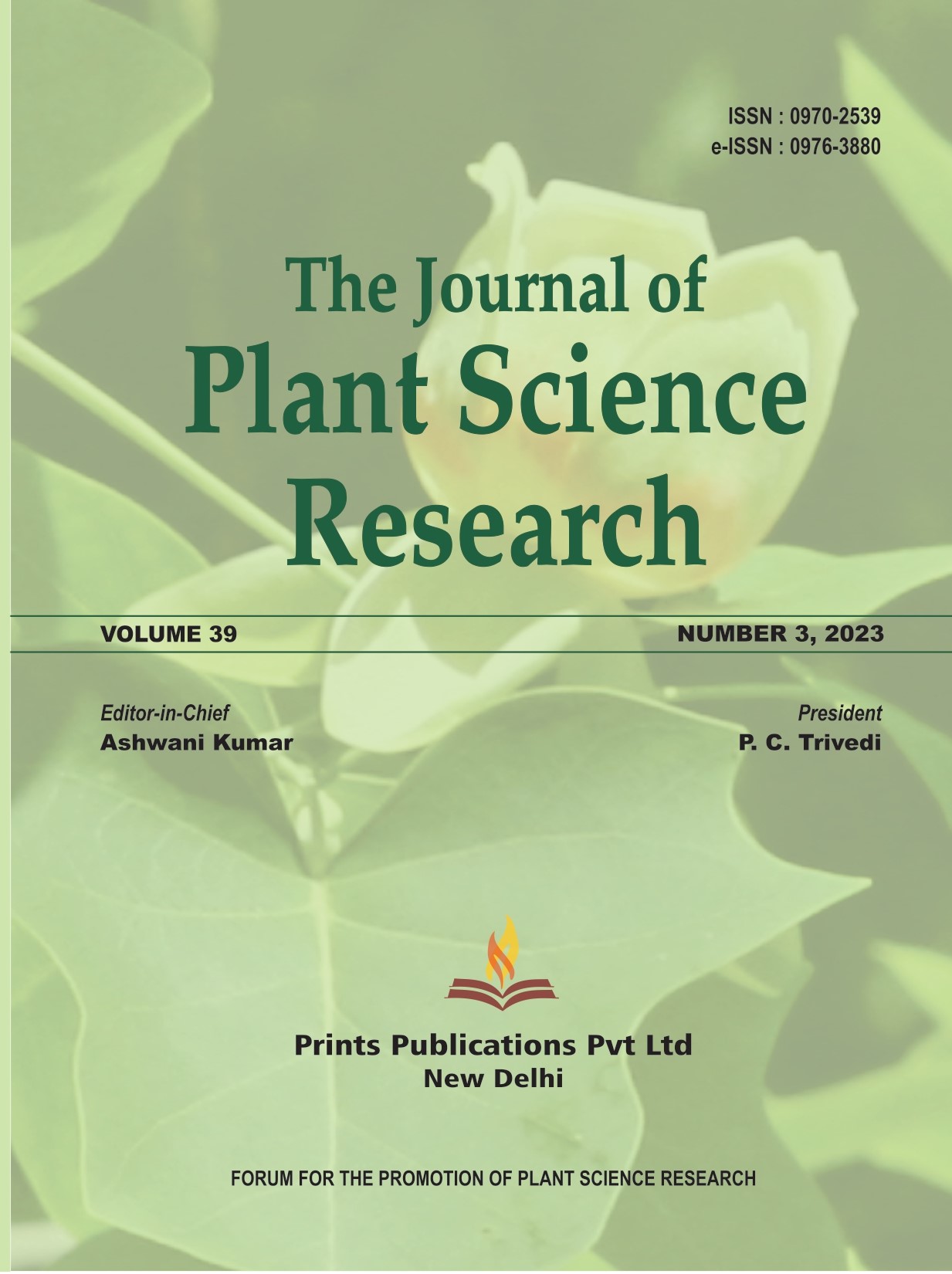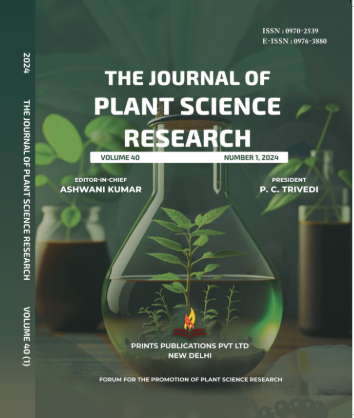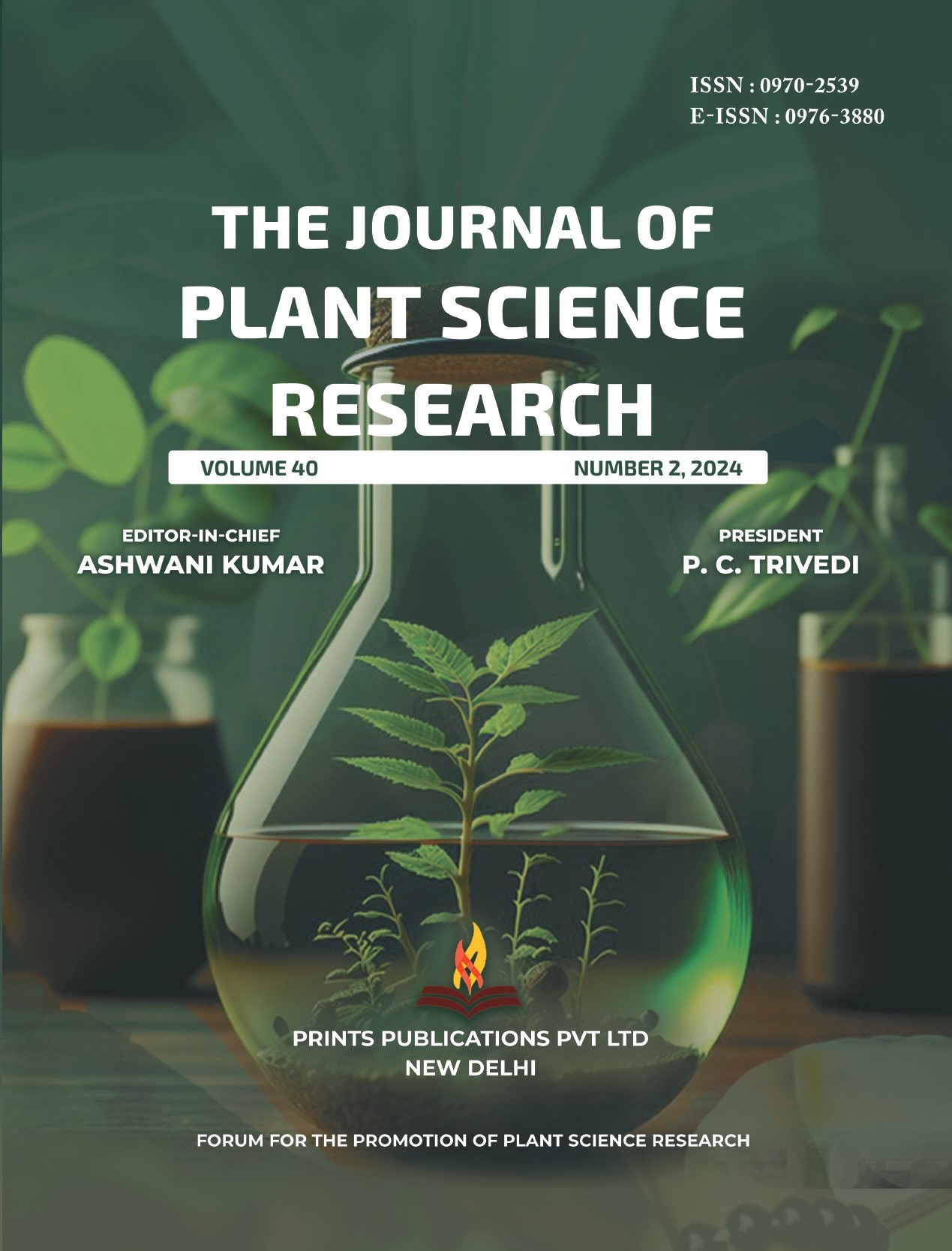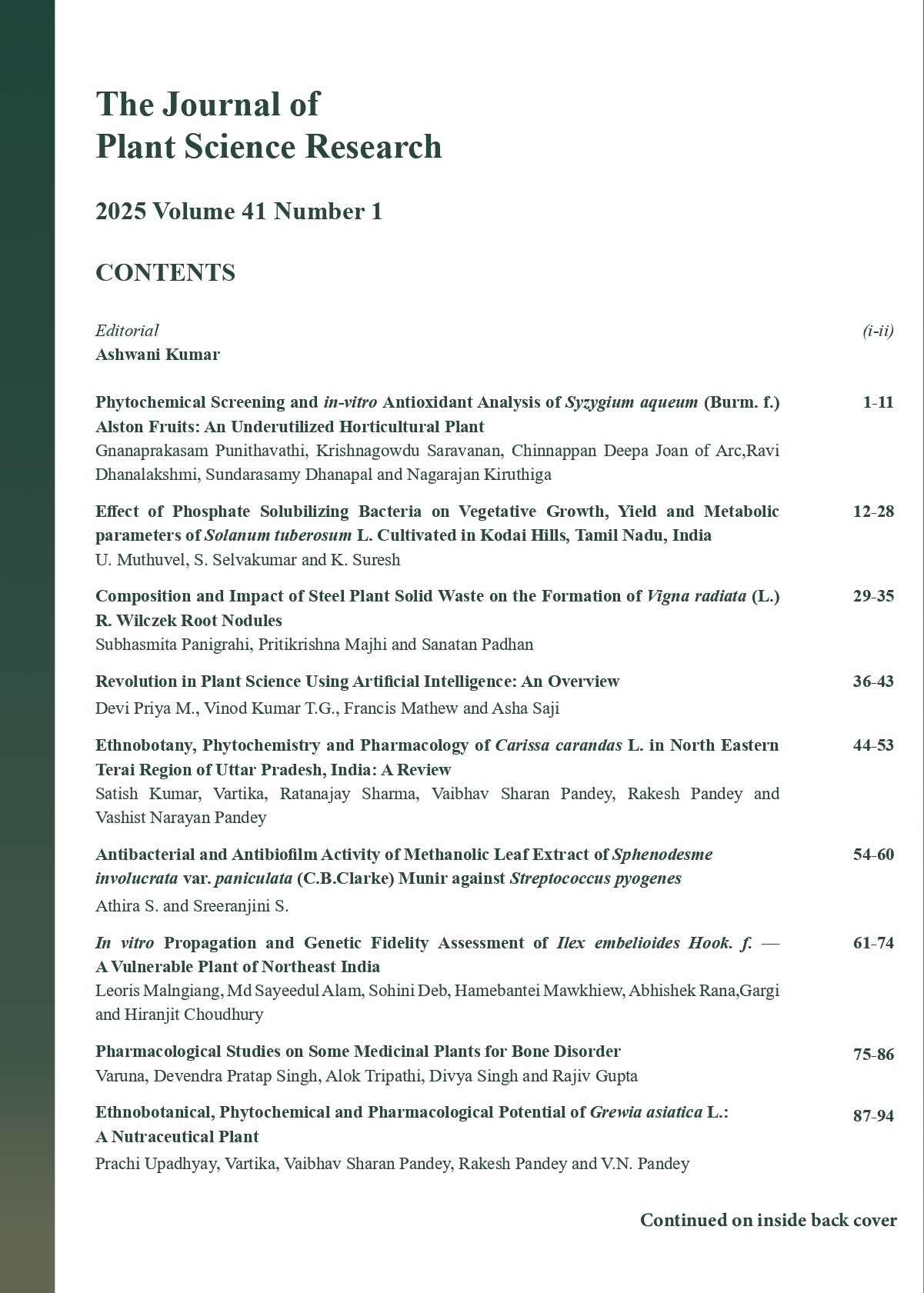The Journal of Plant Science Research - A UGC Care-Listed Journal
Published in Association with Forum For the Promotion of Plant Science Research
Current Volume: 41 (2025 )
ISSN: 0970-2539
e-ISSN: 0976-3880
Periodicity: Tri-annual
Month(s) of Publication: April, August & December
Subject: Botany
DOI: 10.32381/JPSR
Online Access is Free for Life Member
Heat Stress in Plants: Sensing and Defense Mechanisms
By : Akanksha Sehgal, Kumari Sita, Harsh Nayyar
Page No: 195-210
Abstract
High temperature has become a global concern because it severely limits plant growth, metabolism, and productivity worldwide. Plant growth and development involve numerous biochemical reactions that are sensitive to temperature. Plants possess a number of adaptive, avoidance, or acclimation mechanisms to cope with heat stress situations. In addition, major tolerance mechanisms that employ proteins, osmoprotectants, antioxidants, and other factors involved in signaling cascades and transcriptional control are activated to offset stress-induced biochemical and physiological alterations. Plant survival under elevated temperatures depends on the ability to perceive the heat stress stimulus, generate and transmit the signal, and initiate appropriate physiological and biochemical changes. High temperature-induced gene expression and metabolite synthesis also substantially improve tolerance. The physiological and biochemical responses to heat stress are active research areas, and the molecular approaches are being adopted for developing heat tolerance in plants. Recent developments in molecular genetics have contributed greatly to our understanding of the genetic basis of heat stress tolerance. This has led to the development of abiotic stress tolerant plants with yield advantage by modulation of the expression of genes that encode for enzymes involved in the biosynthesis of osmoprotectants (e.g. Proline, sugars, sugar alcohols, glycine betaine and polyamines), anti-oxidant enzymes, protective proteins (e.g. HSPs), transporters, regulatory proteins, kinases and transcription factors. The present article discusses the various defense mechanisms to counter heat stress responses encompassing different pathways that provide tolerance during high stress.
Authors :
Akanksha Sehgal, Kumari Sita and Harsh Nayyar : Department of Botany, Panjab University, Chandigarh, 16004, India






